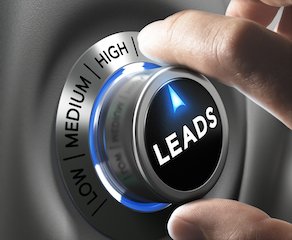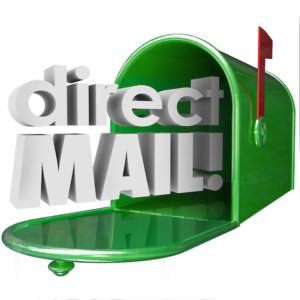Automated email campaigns are not always about selling. Well, they are – but not up front, and not in the way many think.
Automated campaigns are about keeping yourself in front of your clients with specific and meaningful messages. Previously, Mike Ivory penned an article on this topic, and today, we’re going to expand on that idea.
More specifically, we’re going to address the nuts and bolts of automated campaigns, from design to execution. We’re going to explore why, to whom, and when you should send automated campaigns. In addition, we’re going to give you a few sample campaign examples. But first, we’re going to spend some time discussing your contact database and the preparation involved to maximize usability for marketing automation.
Breaking down your database
There are various CRM applications available today, but in our experience, the vast majority of insurance professionals are not using one – or at least not to it’s fullest potential. Maintaining records is of utmost importance for compliance purposes, but the contact details are what can make you a superstar producer. The more specific information you retain about your clients, the more likely you are to be in front of them at the time that matters the most – when they’re ready to buy!
So, how are we able to use contact details to our benefit? The more specific data we have on a prospect or client, the more we’re able to customize a specific message that will resonate with them. We’re also able to generate more potential touches throughout the year, leading to better name recognition, more inquiries and referrals, and ultimately resulting in more sales. The key is the data, and the more data we have, the more “targeted” we can become in our messaging.
In our database, we want to maintain as much personal knowledge as possible. In the insurance world, this means dates, incomes, people, and places – and its up to you to collect that data. Once you have it, the ability to use tags and personalization fields means endless targeted automations.
Why would I do this?
A question we’re always asked is, “Why marketing automation?” There are many simple answers to that question:
- to save time for revenue-producing tasks;
- to receive more referrals;
- to close more leads;
- to reduce the time spent on lesser opportunities; and
- to forget fewer opportunities.
At one point or another, we’ve all fallen victim to scenarios where we’ve wanted more business, more leads coming in via referral, or more of the right kind of leads, but were simply too busy to keep track and follow up on everything. It’s pretty common among small agencies – you’re not alone.
Automation is the answer
How are we going to set up automated campaigns? We’re first going to identify our sales lines and break them down to their most basic. An example would be a producer who works in the P&C field. The producer is primarily going to focus on home and automobile insurance. It’s basic, but we’re going to learn about the potential client having multiple homes, automobiles, and drivers on each policy.
Let’s identify our typical touch points for this prospective client. Our first touch point is likely a phone call coming in to our office. We’ll set up an appointment, and make sure we record the meeting date and time in our CRM. This piece of data is important, because our first automated campaign will be an appointment confirmation email that goes out the prior day. Yes, you read that right – instead of having to manually send an email reminder, some CRM systems can automatically send it out, which also eliminates scheduling a task on our to-do list.
Following the appointment, we’re going to have an automated email sent out thanking them for meeting with us along with a couple testimonials from existing clients, which will further build our credibility. A day following that meeting, an automated email will go out confirming the follow-up appointment scheduled during the first appointment (you did get that scheduled, right?). We’ll follow that up with a confirmation email a day prior to that appointment.
So we’ve set up a few touch points with our clients, and the only information we’ve input into our system so far was the date and times of two appointments. While we’ve likely input more information than that (which can be used for further campaigns), we’ve sent out four emails to our prospects (offering more branding and building rapport) without having to lift a finger.
We can also leverage the information obtained during the initial consultation and/or sale into automated campaigns that provide timely messages educating clients on topics such as umbrella coverage, disability insurance, life insurance, and possibly health insurance as well.
Another specific example is to set up a recurring campaign for your male clients who are married. Prior to their wife’s birthday and their anniversary each year, you’re going to send out an email reminder, which could include recommendations for a good jeweler, florist, restaurant, or travel agent. Quick and easy, right? You set it up once, input the information into the database, and you have a campaign that runs every year without having to think about it. You are a rock star in their eyes, and it makes referring your services easy.
More uses for automated campaigns
The aforementioned are just basic examples of how an automated system can work to your advantage. Our examples are designed to get you thinking creatively about how to apply automated campaigns to your business model, whether you sell mostly to individuals or businesses. There are many other situations where automated campaigns would be useful:
- Site tracking triggers: when someone in your database visits specific pages on your website, this would trigger a pre-designed automated campaign sent to that visitor.
- Sales inquiries: when someone requests a quote from your site, downloads a white paper, or signs up for a seminar, you can have an automated campaign with educational messages designed to accelerate the sales process.
- Post-sales follow-up: after making a sale, you can have an automated series that discusses when their policy should arrive and what to do with it, along with suggestions of who to advise of its existence. Don’t forget to ask for referrals at this point!
There are multiple other times when automated campaigns can save you time and allow you to use contact data to your advantage. A few other examples include:
- the annual renewal process or policy review;
- a proactive service process;
- birthday wishes and reminders;
- anniversaries and other milestones;
- meeting confirmation reminders; and
- seminars (announcements, registration confirmation and reminders, social sharing, etc.).
We hope we’ve given you plenty to think about. Starting with automated campaigns begins with preparing your database, outlining your product or service offerings, clarifying your sales steps and processes, and then writing and designing the automated messages. Like many other business-building endeavors, there is initial time investment; however, as your automated campaigns are put into practice, up-front planning and work will reap long-term rewards.
Stewart Logan is the owner of Xopaa, a cloud-based platform leveraging email marketing automation, an integrated CRM, and a sales pipeline management tool. Previously he owned an insurance agency specializing in group benefits for over 9 years. Stewart can be contacted at [email protected] or 888-765-4100×301.
More uses for automated campaigns
The aforementioned are just basic examples of how an automated system can work to your advantage. Our examples are designed to get you thinking creatively about how to apply automated campaigns to your business model, whether you sell mostly to individuals or businesses. There are many other situations where automated campaigns would be useful:
- Site tracking triggers: when someone in your database visits specific pages on your website, this would trigger a pre-designed automated campaign sent to that visitor.
- Sales inquiries: when someone requests a quote from your site, downloads a white paper, or signs up for a seminar, you can have an automated campaign with educational messages designed to accelerate the sales process.
- Post-sales follow-up: after making a sale, you can have an automated series that discusses when their policy should arrive and what to do with it, along with suggestions of who to advise of its existence. Don’t forget to ask for referrals at this point!
There are multiple other times when automated campaigns can save you time and allow you to use contact data to your advantage. A few other examples include:
- the annual renewal process or policy review;
- a proactive service process;
- birthday wishes and reminders;
- anniversaries and other milestones;
- meeting confirmation reminders; and
- seminars (announcements, registration confirmation and reminders, social sharing, etc.).
We hope we’ve given you plenty to think about. Starting with automated campaigns begins with preparing your database, outlining your product or service offerings, clarifying your sales steps and processes, and then writing and designing the automated messages. Like many other business-building endeavors, there is initial time investment; however, as your automated campaigns are put into practice, up-front planning and work will reap long-term rewards.
Stewart Logan is the owner of Xopaa, a cloud-based platform leveraging email marketing automation, an integrated CRM, and a sales pipeline management tool. Previously he owned an insurance agency specializing in group benefits for over 9 years. Stewart can be contacted at [email protected] or 888-765-4100×301.
Share:
[addtoany]













